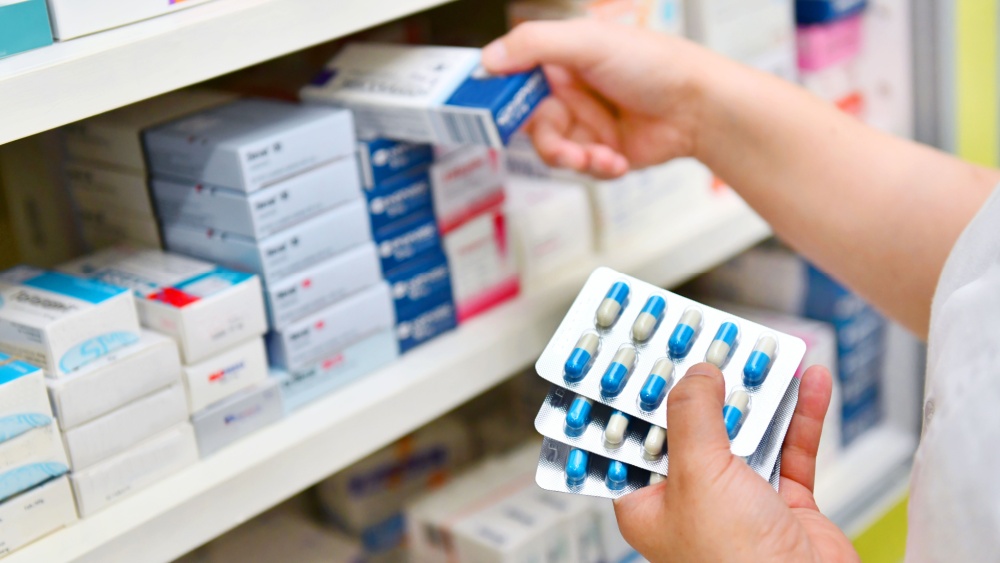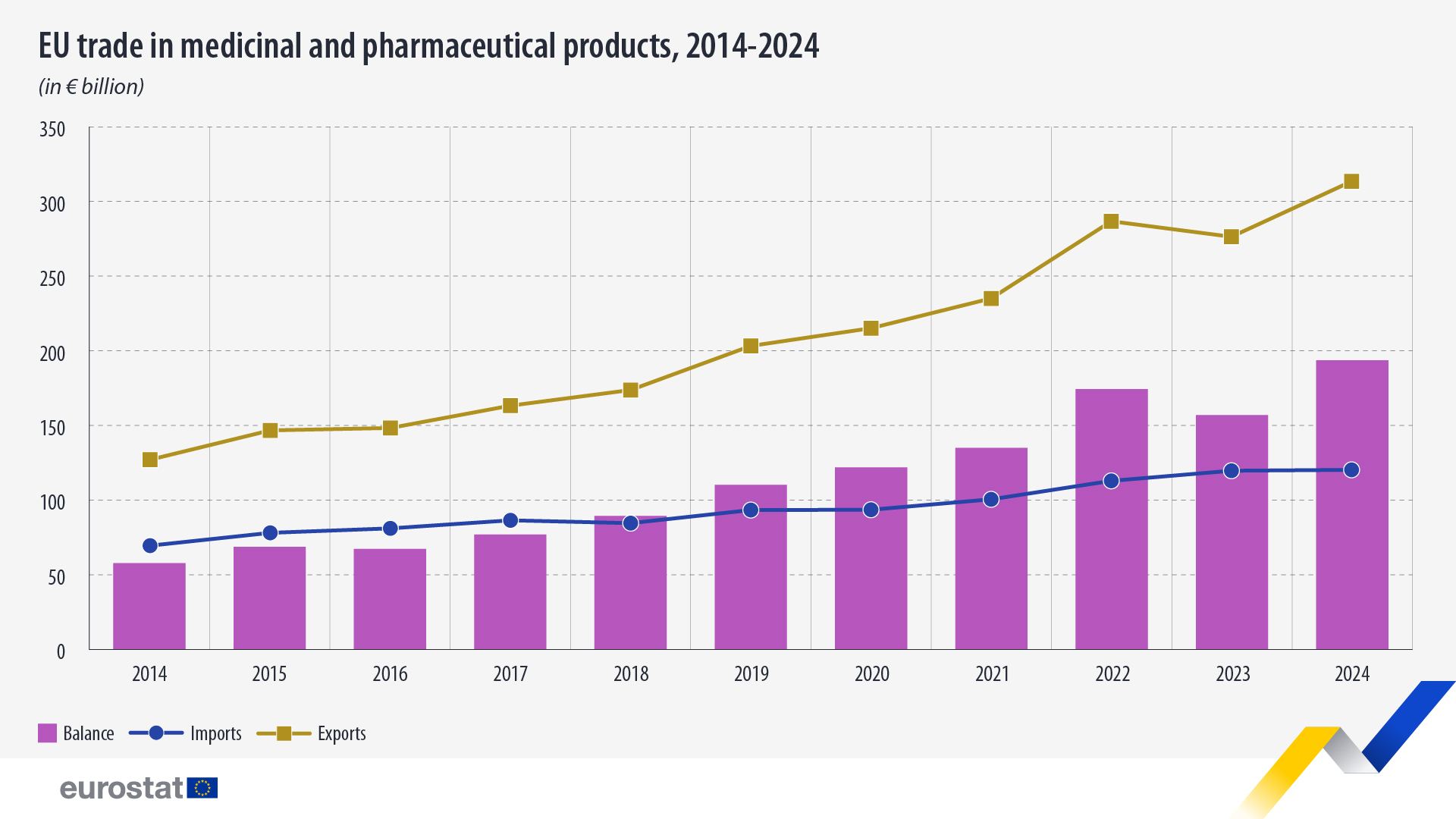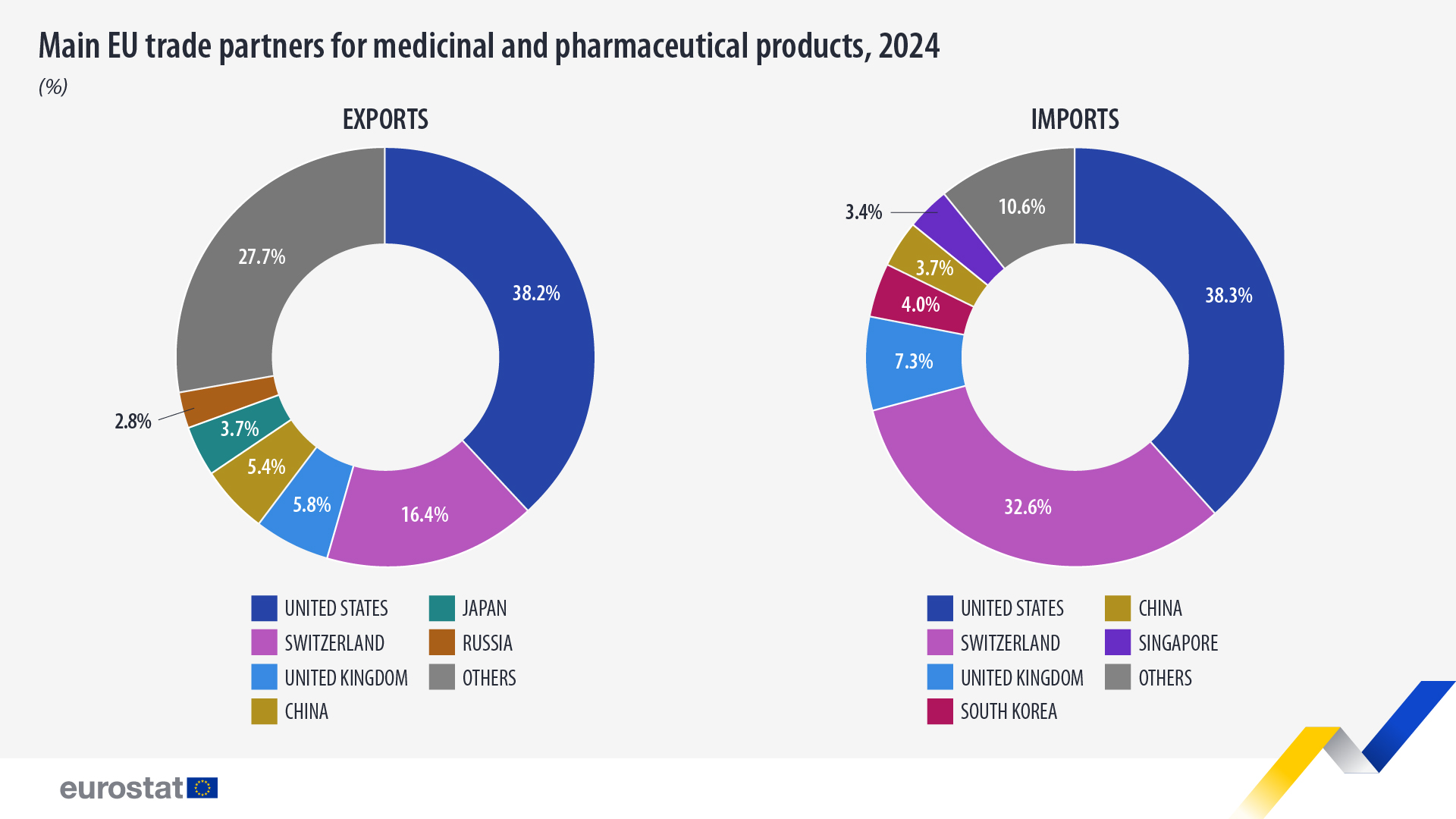Exports of medicinal and pharma products up by 13.5%

In 2024, EU exports of medicinal and pharmaceutical products increased by 13.5% compared with 2023, reaching €313.4 billion. At the same time, imports only recorded a modest increase of 0.5%, amounting to €119.7 billion.
Consequently, in 2024, the EU's trade surplus in medicinal and pharmaceutical products came to a total of €193.6 billion, marking a record high.
Source dataset: ds-059331
Top extra-EU exporters: Germany, Ireland and Belgium
In 2024, Germany was the EU’s largest extra-EU exporter of medicinal and pharmaceutical products (€67.9 billion), followed by Ireland (€56.6 billion) and Belgium (€41.4 billion).
The largest extra-EU importers were Germany (€23.0 billion), Belgium (€21.3 billion) and the Netherlands (€14.7 billion).
Main trade partners: US and Switzerland
The main destination for extra-EU exports of medicinal and pharmaceutical products in 2024 was the United States (38.2% of all exports outside the EU; €119.8 billion), followed by Switzerland (16.4%; €51.3 billion) and the United Kingdom (5.8%; €18.2 billion).
Most of the imports to the EU came from the United States (38.3%; €45.9 billion), Switzerland (32.6%; €39.1 billion) and the United Kingdom (7.3%; €8.7 billion).
Source dataset: ds-059331
For more information
- Statistics Explained article on international trade in medicinal and pharmaceutical products
- Thematic section on international trade in goods
- Database on international trade in goods
Methodological notes
- The Standard international trade classification (SITC) product code used for medicinal and pharmaceutical products is 54.
- Dutch and Belgian trade flows are over-estimated because of the so-called ‘Rotterdam effect’ (or quasi-transit trade): goods originating in other EU countries that are exported through Dutch and Belgian ports are, according to EU rules, recorded as extra-EU exports by the Netherlands and Belgium. Similar considerations apply to imports from countries outside the EU that arrive in Dutch and Belgian ports and are re-exported to other EU countries.
If you have any queries, please visit our contact us page.


